Free the Vaccine in 2020
A look back at what we’ve accomplished, what we learned, and where we’re headed.
In early 2020, with COVID-19 consuming the globe, Universities Allied for Essential Medicine (UAEM) and Center for Artistic Activism (C4AA) partnered to create Free the Vaccine for COVID-19, a global movement to ensure that COVID-19 testing, treatment, and coming vaccines are safe, effective, affordable, and available to all.
The COVID-19 pandemic has shed light on what the access to medicines movement, in which UAEM is a leader, has known for decades: the current biomedical research and development model we use to make medicines systematically excludes many people and populations. To address this, we have brought together hundreds of people across 29 counties to collaborate on Free the Vaccine to demand that the COVID-19 vaccine be a global public good–available to everyone, everywhere free at the point of delivery.
Participants are artists, medical students, researchers, healthcare professionals, activists, and people looking to do something constructive during the pandemic. While scientists are working in their labs, members of Free the Vaccine work in a global “Advocacy Innovation Lab” to develop creative actions to ensure testing, treatments, and vaccines are available to all. Participants attend weekly online trainings to learn creative methods and best practices, and then they work in small groups to apply what they learn in their communities. Hundreds of creative actions have been implemented all over the world.
What we’ve accomplished
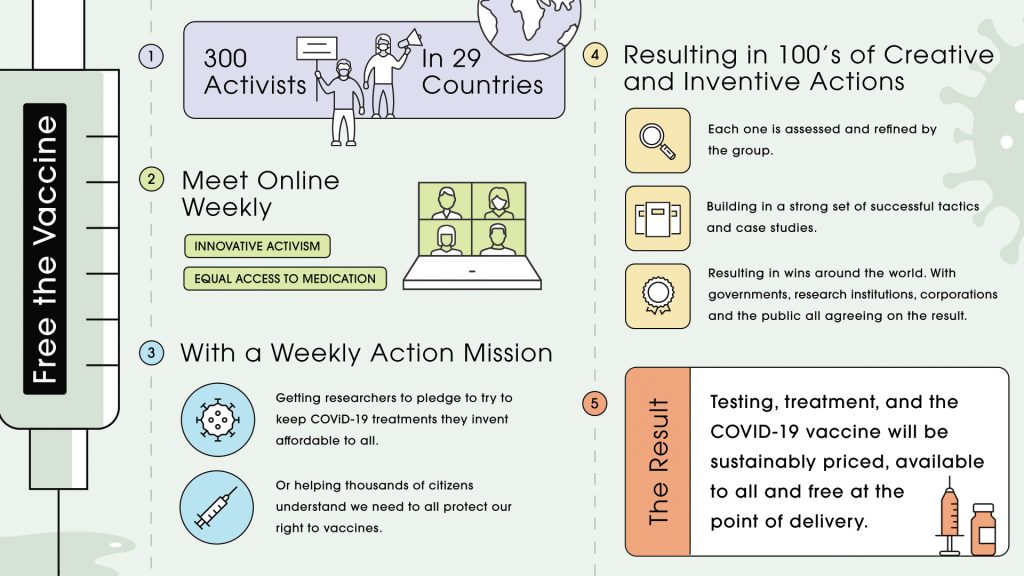
Advocacy Innovation Labs
Our Pilot Advocacy Innovation Lab,, or “Season 1” of Free the Vaccine for COVID-19 (FTV) lasted 16 weeks, starting with more than 300 volunteers including artists, students, activists, non-activists, young and old from 29 countries. We formed “Salk Squads” (named after Jonas Salk who discovered the vaccine for polio and chose to give it to the world rather than profit from it himself). We organized these hundreds of strangers from strikingly diverse backgrounds to collaborate creatively and quickly online. Participants carried out weekly missions that built on their skills and pressured key targets in the direction of the campaign goals, implementing over 30 actions encouraging university research labs to pledge to support equitable access to COVID-19 medicines developed on their campuses.
Our second “season” of the Free the Vaccine consisted of a 12 week program with weekly calls, an intensive weekend training program and actions with over 270 diverse background participants from around the globe. Due to the number of participants who had Spanish as their mother tongue we chose to offer simultaneous interpretation into Spanish for the first time. New university targets were added to the list and others stalled but progress has been consistent.
The Free the Vaccine Exhibit
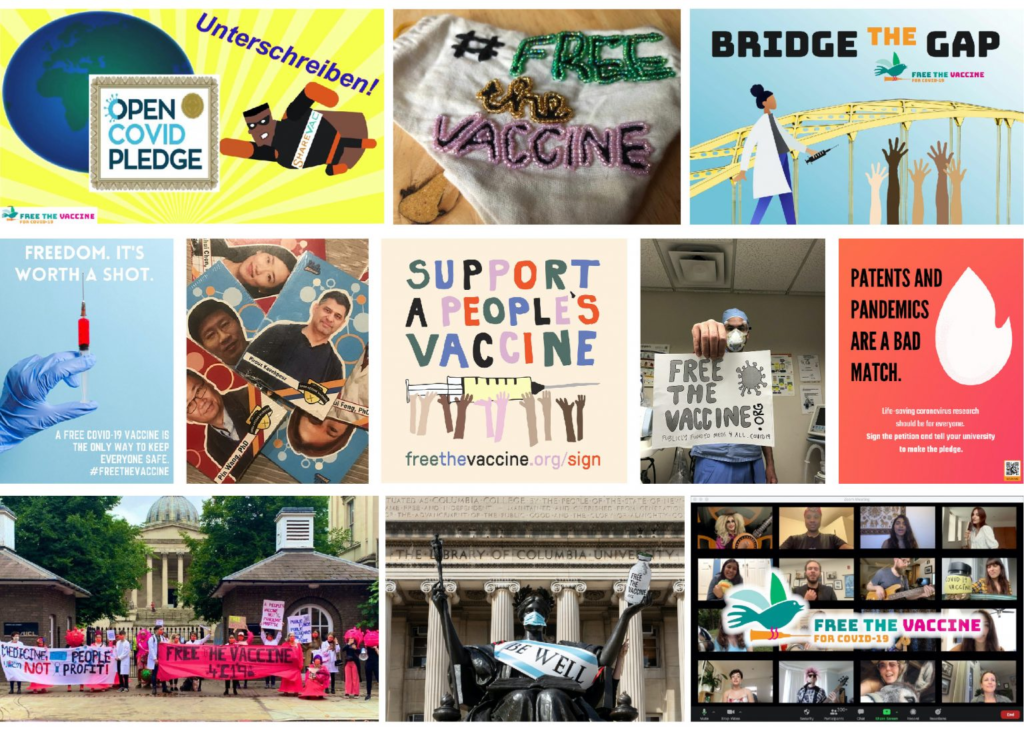
“Creativity vs. COVID: Ending the Pandemic for Good” is an online and physical exhibit showcasing the creative activity of Free the Vaccine participants, from posters to performances. At its core, it highlights innovative methods of artistic activism that anyone can use, inviting audiences to recognize and harness the power they have. The exhibit is designed to inspire audiences and equip them with practical methods, tools, and processes so they can use their own creativity and passion to advance causes they believe in. “Creativity vs. COVID” is currently set to be hosted at the University of Maine and ScienceWorks Museum in Oregon, among other possible venues.
Joining the People’s Vaccine Alliance
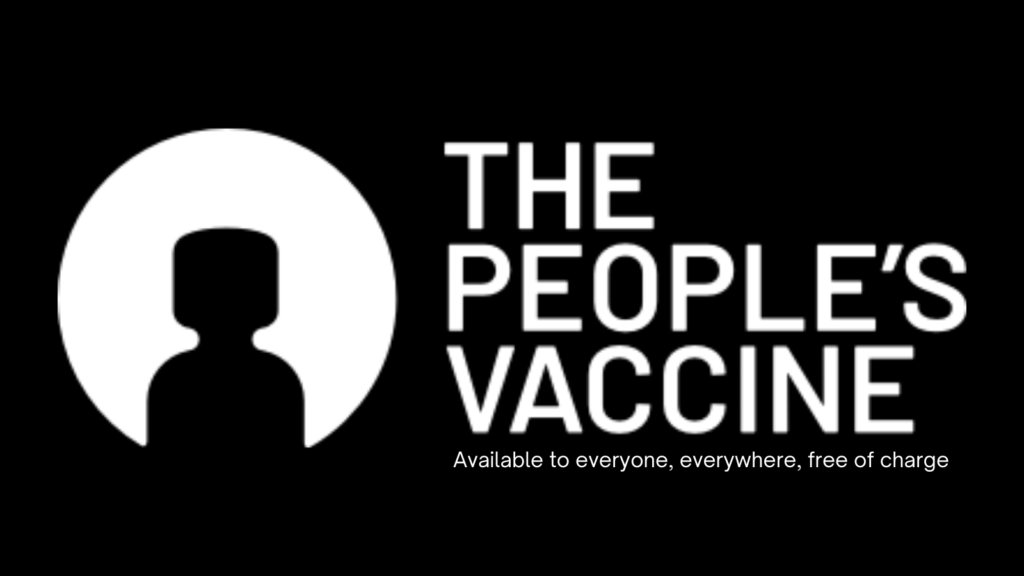
Our grassroots efforts have not gone unnoticed. When Oxfam and UNAIDS launched their “Peoples Vaccine” letter on 14th May, 6 weeks after we launched the Free the Vaccine campaign, it was clear that we shared common goals, three of them were identical. Not long after we began collaborating with Oxfam, and had already been incorporating their letter as a tactic for urging universities in target countries to follow the leadership of their own former leaders in endorsing a people’s vaccine that is safe, effective, available to all and free.
During the summer we were invited to become a founding member of the People’s Vaccine Alliance. Our campaign is driving much of the global grassroots organizing at this time and we will continue to strategize and coordinate throughout 2021 for actions and activities virtual and in person. Together we are a growing movement of health and humanitarian organizations, past and present world leaders, health experts, faith leaders and economists urging that when safe and effective vaccines are developed they are produced rapidly and at scale and made available for all people in all countries, free of charge. Of all of the groups in the alliance Free the Vaccine for COVID-19 is the only campaign that includes universities as targets for addressing the drug pipeline system and the global access challenges.
Targeting Universities
Initially we began targeting 50 universities but made progress with about half of those targeted. Throughout the season, we closely researched why some strategies and tactics were working, and why others weren’t. Successful tactics were shared across all the regions so they could be iterated upon. At present labs, as of December 2020, our labs are in conversations with 15 institutions including McGill University, Indiana University, Georgetown, University of California, Los Angeles, the University of British Columbia, University of Maryland and New York University among others.
Since the start of the campaign, we have seen a measurable increase in responses from leading research universities who have the power to move the drug development system towards more equitable practices. However, the move from initial engagement with our team to concrete measures by institutions has been more challenging. It is without a doubt of deep concern that universities are serving as major obstacles with regard to ensuring global equitable access to public-funded COVID-19 medicines and technologies developed in their labs. While we maintain pressure on these leading institutions there has been a continuous press interest in our campaign and its goal.
Funk Rally
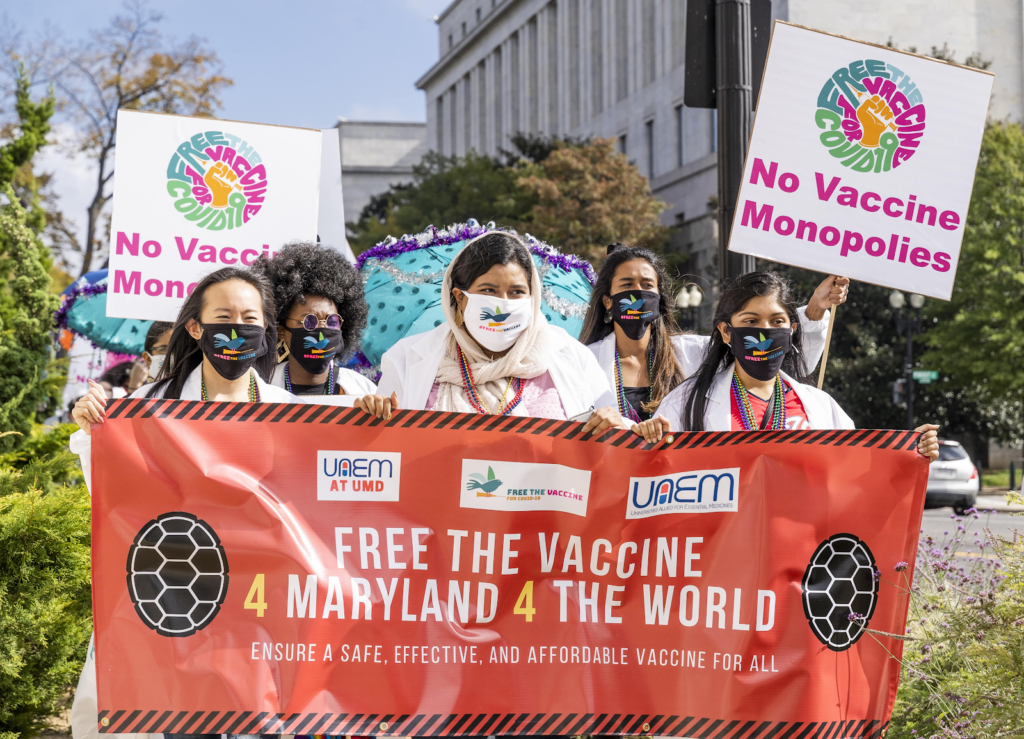
The Free the Vaccine team led a vibrant first-of-a-kind Funk Rally outside of the Department of Health and Human Services (HHS) in conjunction with 14 other organizations. The Funk Rally for a People’s Vaccine was held on October 21, 2020 in Washington DC. The goal was to urage those attending a key meeting the next day to fight for a People’s Vaccine that would be safe and effective for all, not rushed for political gain and free for everyone worldwide. Over 78,000 viewers globally watched the live stream via ACT.TV. Video of the recording can be watched here. A post-rally discussion led by Kymone Freeman with Dr Reed Tucson from Black Coalition against Covid-19, Merith Basey and Owoade Kadara from Free the Vaccine was also delivered at WeActRadio based in Anacostia, Washington, DC.
Free the Vaccine Media Glossary
We began developing a media glossary with the goal of correcting inaccurate reporting in the media. FTV wrote the guide collectively with input and advice from our Jedi Council. This tool is aimed at providing journalists with information to correct misinformation, clear up misconceptions, and help them avoid common pitfalls in doing this reporting. Ultimately, the COVID19pressguide will contribute to ensuring that the public is fully informed about safety of the vaccines, who has funded the vaccines, and the need for a People’s Vaccine.
As a campaign advocating for free access to COVID-19 vaccines, diagnostics, and treatments, we rely on journalists to report clearly and accurately about the global research and development system. The guide offers some pointers and define some key terms that can help writers and journalists make sure the public is getting all of the necessary information, spelled out in a way that they are fully informed about the vaccine development process, how it’s supported, and when and how these treatments will reach everyday people.
In the media
The campaign has received over 50 press mentions including from BBC, America Dissected, CBS, In These Times, Washington Post and many others from Brazil to Ghana to Canada. Our campaign is also being followed by the HBO documentary film crew who are directed by David France who made “How to survive a plague”. To see a comprehensive list of most recent press statements and coverage click here. Updates are posted to our website and covered in our weekly podcast.
From our labs
Participants around the world met with students and student government at universities of focus and reached out to university officials. They organized demonstrations, created original art, and used social media in inventive ways to spread the word and mobilize support.
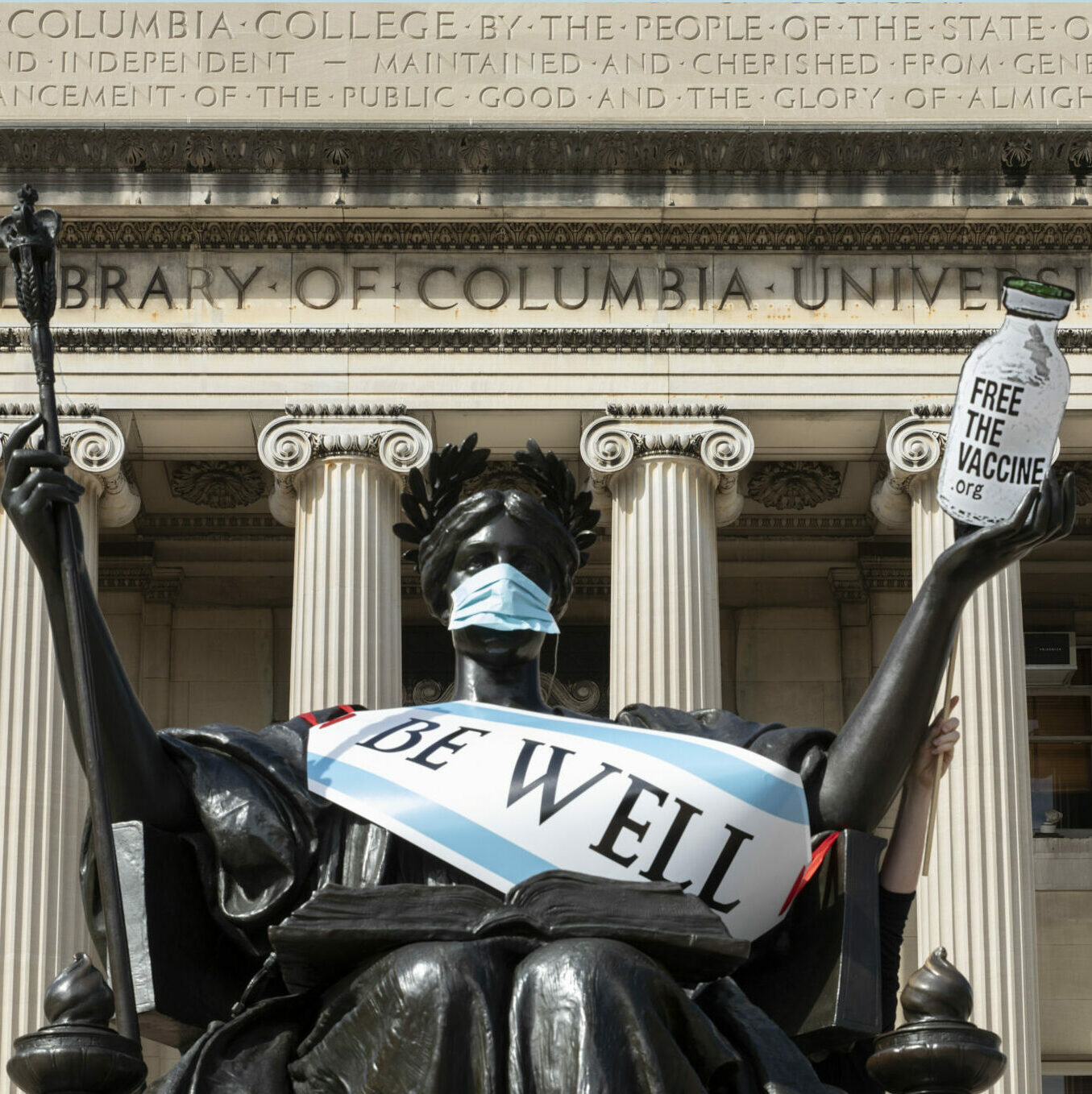
Lab members in Maryland, New York, and across the UK and Canada staged images on and near college campuses featuring school mascots and original vaccine mascots.
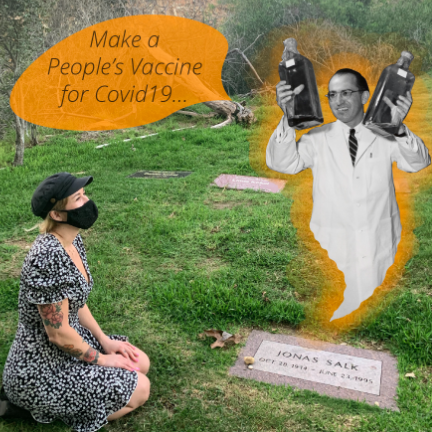
Participants in Pittsburgh resurrected the ghost of Jonas Salk at University of Pittsburgh. They’re now partnering with the University’s Center for Vaccine Research and Pittsburgh’s Community Vaccine Collaborative to develop messaging campaigns to counter vaccine hesitancy.
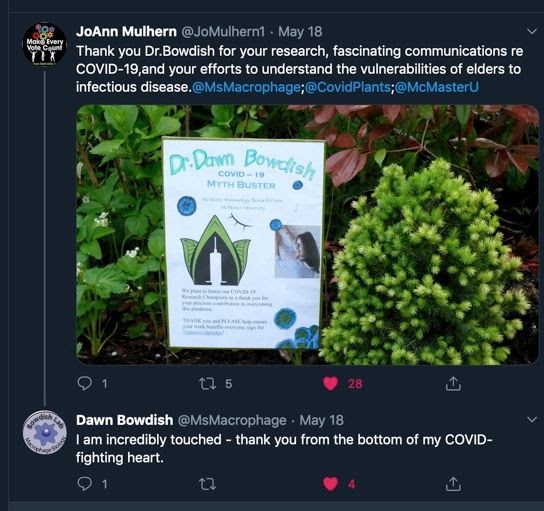
Participants used social media to dedicate plants to COVID-19 researchers to thank them for their work.
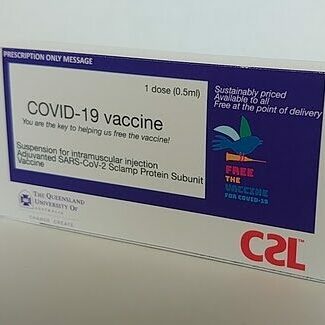
Participants made and sent beautiful, original work to their targets, including sleep masks, face masks, bracelets, magazines, playing cards, cakes, and vaccine boxes.
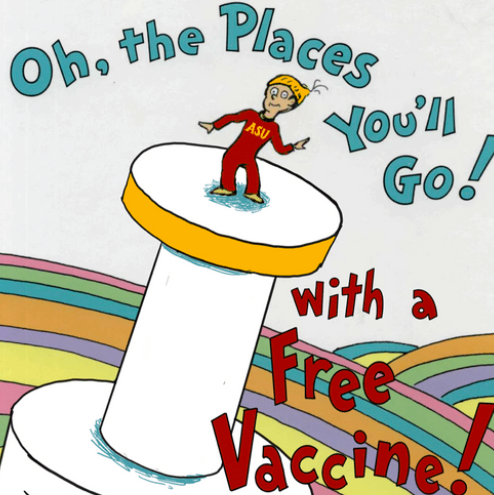
Lab members in Arizona, Amsterdam, and Pittsburgh mixed culture, humor, and surprise to create campaigns specially-designed to resonate with their targets using Dr. Seuss’s Oh the Places You’ll Go, the popular series Goodnight Stories for Rebel, and LEGO.
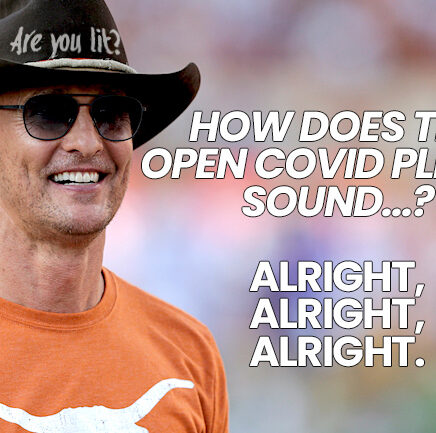
They pressured celebrities with ties to universities, such as Matthew McConaughey at the University of Texas and Dolly Parton with a parody video that went viral.
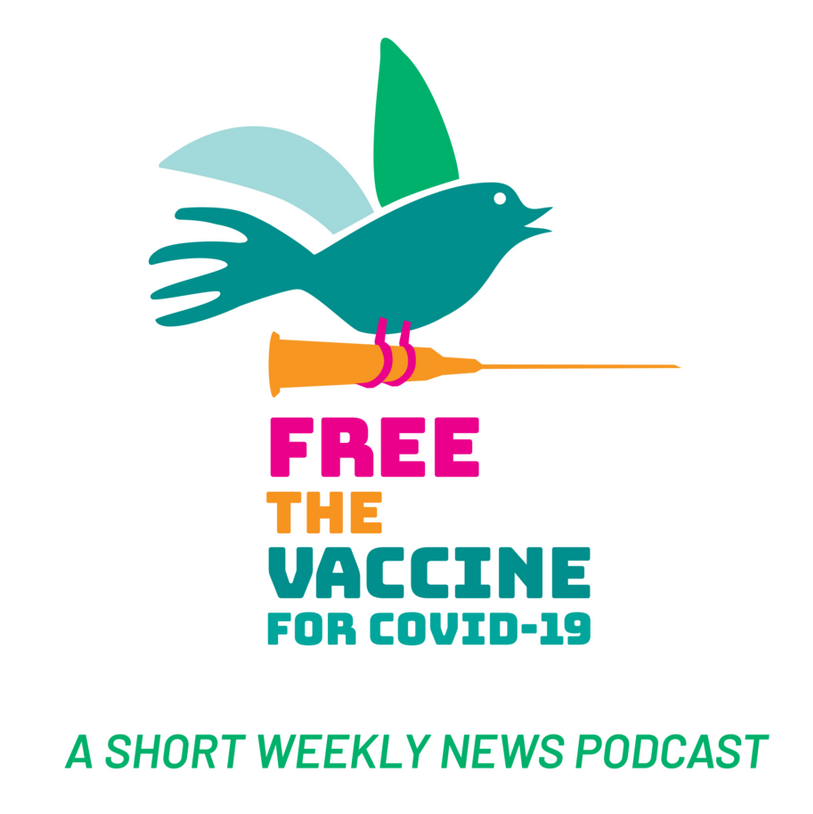
Lab members in Maryland and Montreal spoke on college radio stations and podcasts, and the campaign created its own vaccine news podcast.
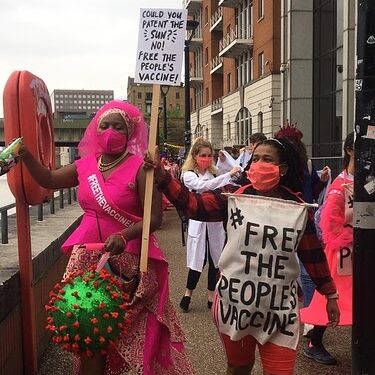
Lab members staged demonstrations to spur action with the Funk Rally in Washington, DC as well as a Carnival March for a People’s Vaccine in London. Banners, placards, and QR codes were available for passers by helped them more clearly understand the action and demands.
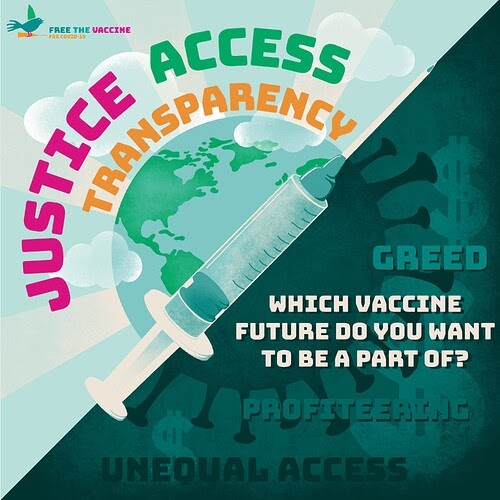
Participants in Europe created beautiful, interactive infographics around vaccine development and accessibility issues
Participants learned extensively about the access to medicines and creative activism movements. They learned how to analyze vaccine news and talk to people about it, with several saying they learned how to engage people who may disagree with them. Many successfully engaged family members to support the cause, and one celebrated “bringing my mom around to understanding issues related to access to medicines (she is really hard to convince!).” Participants learned about SMART (Specific, Measurable, Achievable, Relevant, Time-based) objectives, developed them for their targets, and had lots of practice realizing them. They learned the importance of taking action, with participants in the UK summarizing: “Start: small or big, doesn’t matter! just do it.”
Participants learned additional transferable skills including effective messaging, active listening, writing press releases, emailing in a professional manner, and using social media to advance aims. Many said they gained confidence, leadership, and investment in their communities, with one sharing that they now have “courage to know I am capable of making change.”
They also learned together and made art with participants from all over the world, including stop motion animation, Henna, dance, and calligraphy. Participants reflected having built deep connections with each other: they made friends and had fun, with one saying they had “more fun in zoom meetings than thought possible.” Participants in Canada summarized their experience by writing, “We had fun, and remain passionate about advocating for an accessible vaccine (and diagnostics and treatments).”
Brought my mom around to understanding issues related to access to medicines (she is really hard to convince!) – she even posted some of our FTV work on her social media.
What we’ve learned
Maintaining morale
We learned that it can be challenging to keep up morale when fighting such systemic injustices, and so as we went on we realized the importance of celebrating successes of all kinds and increasing fun in as many ways as possible. We publicly highlighted labs taking positive steps towards their objectives, and we created an original, absurdist soap opera, had participants lead sessions on different art crafts, and hosted a party that featured karaoke and dance. We shortened our season from 16 weeks to 12 weeks from Season 1 to Season 2 to minimize burnout and help keep people motivated and engaged.
Encouraging action
We noticed that labs were sometimes hesitant to take action. To help them move towards action we began meeting with each lab to work with them to develop a clear strategy and then gave “missions” with specific actions for participants to undertake in order to realize the strategy. We found that asking participants to start by dreaming up impossible ways of realizing their objectives is very effective and allowed for exciting, possible ideas to be realized.
Recipe for success
More successful labs have been diverse in age, background, and skill. Labs made up entirely of students from the same university sometimes struggled as participants would get very busy at the same times (e.g., midterms, finals), whereas other labs had more flexibility and experimentation. Labs were also more successful if they had a mix of people familiar with access to medicines and creative activism–his served as a balance between focusing on access to medicines objectives and taking creative risks to achieve their goals. To help engage people of different backgrounds, at the beginning of Season 2 we added a 4-hour orientation, half spent on access to medicines, half spent on artistic activism, to help get everyone up to speed. Participants appreciated this and learned a lot from it.
Broadening targets
After two seasons of focusing almost exclusively on universities, we have learned that we should expand our targets and will be doing so in Season 3. Having less geographically-specific targets will also help us diversify the makeup of our labs, which is something we’ve learned participants want: they want to interact more with people across the world, and we will better facilitate this moving forward.
What’s next
UAEM and C4AA are thrilled to commit to working together for a third season of Free the Vaccine for COVID-19 expected to launch in mid-February. Our focus for the third season will be different in two primary ways:
- We intend to broaden the audience and expand the campaign to be much more broadly public-facing. Inspired by some of the iconic images that were developed during the early years of the HIV/AIDS movement, including by our very own Jedi Council member the inspirational Avram Finkelstein, we believe our campaign has the potential to develop and adapt the images that will inspire a generation.
- We will expand our targets to include the public funders of biomedical research and development such as the National Institutes of Health (NIH) in the US or the Canadian Institute of Health Research (CIHR).


While the vaccine is slowly being rolled out we know that 9 in 10 people in low income countries will not have access if we continue on the route we were concerned about throughout this campaign. We need to revolutionize the ways medicines are researched and developed so that the profit is no longer privatized and to ensure health-needs drive demand and lead to a more equitable system. COVID-19 and access to tests, treatments and the vaccines is just one example of this bigger systemic challenge.

